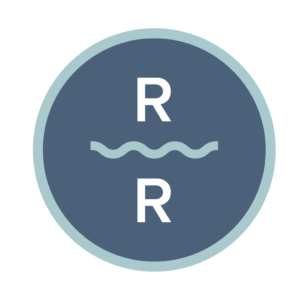Hallucinogen Use Disorder | Types, Symptoms & Treatment Options


- Last Modified: August 20, 2023
Hallucinogens, a class of psychoactive substances, have gained attention for their ability to induce altered states of consciousness and unique perceptual experiences. However, their use can lead to the development of Hallucinogen Use Disorder, a chronic condition that significantly impacts individuals’ lives. In 2014 approximately one million people in the United States had used hallucinogens according to the Substance Abuse and Mental Health Association (SAMHSA).
Understanding the various types of hallucinogens, their effects, and the associated dangers is crucial in identifying hallucinogen use disorder and prescribing effective treatment. This article explores the symptoms, diagnosis, and evidence-based treatment options available to those seeking recovery.
What Is Hallucinogen Use Disorder?
Hallucinogen Use Disorder is a substance use disorder (SUD) characterized by recurrent and problematic use of hallucinogenic substances. Although some may participate in hallucinogenic use for cultural reasons (such as peyote in Native American culture or psilocybin use by indigenous populations in South America and Mexico) or even in certain treatment regimens, repeated misuse of hallucinogens can lead to addiction, or, substance use disorder. Individuals struggling with hallucinogen use disorder experience clinically significant distress and impairment in areas of their lives due to their hallucinogen use.
What are Hallucinogens?
Hallucinogens are a class of psychoactive substances that induce alterations in perception, mood, and cognition. These substances produce hallucinations, sensory distortions, and intense emotional experiences. Common hallucinogens include lysergic acid diethylamide (LSD), psilocybin mushrooms, mescaline, and DMT (dimethyltryptamine).
Types of Hallucinogens
Hallucinogens encompass various substances, each with unique effects and characteristics. A few common types of hallucinogens include:
- LSD (Lysergic Acid Diethylamide)
- Methylenedioxymethamphetamine (MDMA, “Ecstasy”, “E”, or “X”)
- Phencyclidine (PCP)
- Psilocybin Mushrooms (Magic Mushrooms)
- Mescaline (Peyote or San Pedro Cactus)
- DMT (Dimethyltryptamine)
- Salvia Divinorum (Salvia)
How Do Hallucinogens Work?
Hallucinogens, also known as psychedelics, primarily interact with the serotonin receptors in the brain, disrupting normal communication between nerve cells. This leads to alterations in sensory perception, mood, thought processes, and the sense of self. The precise mechanisms of hallucinogens are still being studied, but their effects are believed to be influenced by factors such as dosage, setting, and an individual’s psychological state.
Hallucinogens are often taken orally although some may be smoked, such as DMT or salvia. LSD and MDMA in particular have a long half-life and users may spend hours and even days experiencing or recovering from their effects.
Dangers of Hallucinogenic Drugs
While hallucinogens are not associated with physical dependence or withdrawal symptoms, they pose risks and dangers. Potential hazards include:
- Psychological Distress: The use of hallucinogens can induce intense psychological experiences that may be overwhelming and cause acute anxiety, panic, or psychosis.
- Persisting Perception Disorder: Some individuals may experience prolonged changes in perception, such as recurring visual disturbances, even after the substance has left their system.
- Accidents and Injuries: Hallucinogens can impair judgment, coordination, and perception of time, increasing the risk of accidents and injuries.
- Flashbacks: Recurring hallucinogenic experiences, known as flashbacks, can occur unexpectedly, even without recent drug use.
- Co-occurring Mental Health Issues: Hallucinogen use may exacerbate or trigger underlying mental health conditions, leading to significant distress.
Are Hallucinogenic Drugs Addictive?
Unlike many other substances, hallucinogenic drugs do not typically lead to physical dependence or compulsive drug-seeking behaviors. For example, LSD is not considered addictive however individuals may develop a tolerance to it over time. Despite not typically leading to physical dependence, psychological dependence on hallucinogens can occur, characterized by a strong desire to continue using the substance despite negative consequences.
PCP is a hallucinogen that is known to be addictive if repeatedly misused and can cause withdrawal symptoms like sweating, cravings, and headaches when usage stops abruptly. Ketamine is another hallucinogen that has evidence to suggest recreational use may lead to addiction.
Developing a comprehensive understanding of the addiction potential of hallucinogens is important for tailored treatment approaches. Understanding the nature of substance use disorders and significant signs to be aware of, is crucial for effective treatment and recovery.
Begin Recovery
Signs & Symptoms of Hallucinogen Use Disorder
According to the American Psychiatric Association (APA), the highest rates of hallucinogen use in the United States are found in those younger than 30 years, with peak usage at ages 18 to 29 years old. The prevalence over the course of a year can be found among adolescents 12-to-17-year-olds with an estimated 12-month prevalence of 0.5%.
Recognizing the symptoms of Hallucinogen Use Disorder can aid in early intervention and treatment. Common symptoms include:
- Intense cravings and urges to use hallucinogens
- Difficulty controlling or reducing hallucinogen use
- Continued use despite negative consequences (e.g., strained relationships, job loss)
- Neglecting responsibilities and social activities due to hallucinogen use
- Persistent desire or unsuccessful attempts to quit using hallucinogens
- Spending excessive time and effort obtaining or recovering from the effects of hallucinogens
Other substance use disorders (SUDs) such as alcohol, tobacco, and cannabis and mental health or anxiety disorders can be risk factors associated with higher rates of hallucinogen use disorder.
How is Hallucinogen Use Disorder Diagnosed?
Diagnosing Hallucinogen Use Disorder typically involves a comprehensive evaluation by a qualified healthcare professional. The diagnostic process may include:
- Initial Assessment: The healthcare provider conducts a thorough interview to gather information about the individual’s substance use patterns, related behaviors, and any associated difficulties.
- Diagnostic Criteria: The healthcare professional refers to established diagnostic criteria, such as those outlined in the Diagnostic and Statistical Manual of Mental Disorders (DSM-5), to determine if the individual meets the criteria for Hallucinogen Use Disorder.
- Medical Evaluation: A physical examination and laboratory tests may be performed to assess the individual’s overall health, identify any co-occurring conditions, and rule out other potential causes of the symptoms.
- Psychological Evaluation: A comprehensive psychological assessment is conducted to evaluate the individual’s mental health, including any underlying psychiatric conditions or psychological factors contributing to the disorder.
Treatment for Hallucinogen Use Disorder
Effective treatment for Hallucinogen Use Disorder typically involves a multifaceted approach that addresses the individual’s unique needs. Here are some commonly utilized treatment options:
- Medical Detoxification (Detox): If needed, a supervised medical detoxification process may be recommended to safely manage withdrawal symptoms and ensure the individual’s physical stability.
- Therapy: Various psychotherapeutic approaches, such as Cognitive-Behavioral Therapy (CBT), Motivational Enhancement Therapy (MET), and Contingency Management, can help individuals understand and modify their thoughts, behaviors, and motivations related to hallucinogen use.
- Supportive Care: Supportive care and counseling, including individual and group therapy sessions, provide a safe and non-judgmental space for individuals to share their experiences, gain insight, and develop coping strategies.
- Dual Diagnosis Treatment: If there are co-occurring mental health conditions, an integrated treatment that addresses both substance use and psychiatric disorders can be essential for successful recovery.
- Holistic Approaches: Complementary therapies, such as mindfulness-based practices, art therapy, and yoga, may be incorporated to promote overall well-being and aid in stress management.
- Aftercare and Relapse Prevention: A comprehensive aftercare plan, including ongoing counseling, support groups, and relapse prevention strategies, helps individuals maintain their recovery progress and prevent relapse.
If you or a loved one are struggling with hallucinogenic substances, Riverside Recovery of Tampa is here to help. Our experienced team of professionals provides evidence-based treatment tailored to your unique needs.
Contact us today to begin your journey toward lasting recovery.
National Institute on Drug Abuse. (2021). Hallucinogens DrugFacts. Retrieved from https://www.drugabuse.gov/publications/drugfacts/hallucinogens
National Institute on Drug Abuse. (2020). Hallucinogens – LSD, Peyote, Psilocybin, and PCP. Retrieved from https://www.drugabuse.gov/drug-topics/hallucinogens
Substance Abuse and Mental Health Services Administration. (2020). Hallucinogens and Dissociative Drugs. Retrieved from https://www.samhsa.gov/atod/hallucinogens
American Psychiatric Association. (2013). Diagnostic and Statistical Manual of Mental Disorders (5th ed.). Arlington, VA: American Psychiatric Publishing.
National Institute on Drug Abuse. (2020). Hallucinogens and Dissociative Drugs Research Report. Retrieved from https://www.drugabuse.gov/publications/research-reports/hallucinogens-dissociative-drugs
https://www.psychdb.com/addictions/hallucinogens/3-other-use-disorder